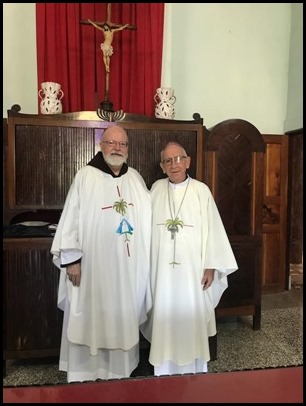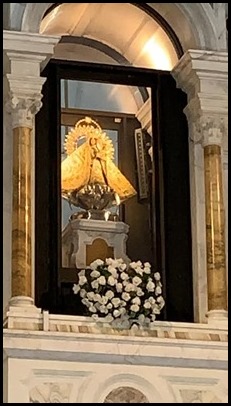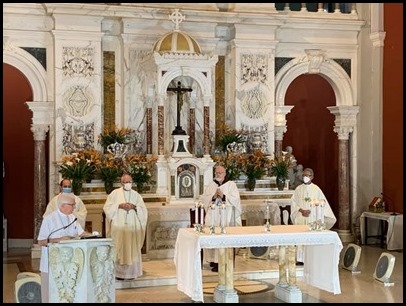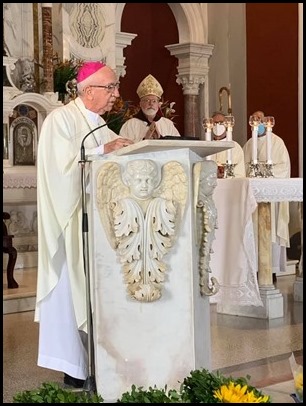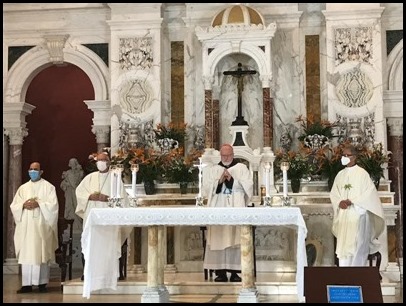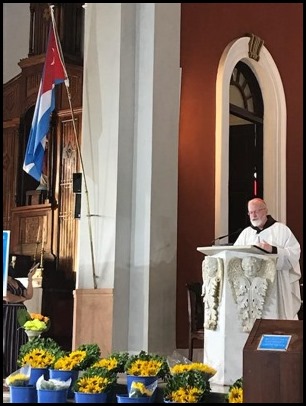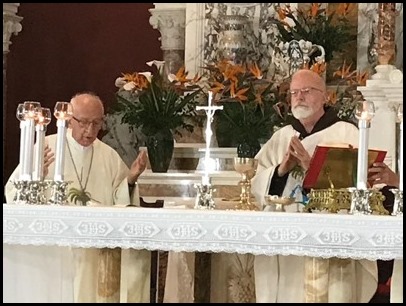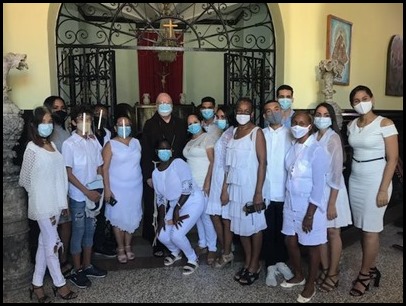Hello and welcome,
Throughout the history of the United States, events have occurred that profoundly changed who we are as a country.
Breakthrough developments in medicine and science, and technology that allows for instantaneous communication, have provided us opportunities to improve our lives and be connected to one another in ways not previously possible. Sadly, war, socio-economic disparities, systemic racism and political divisions have made life more difficult for generations of Americans and deeply divided our society. 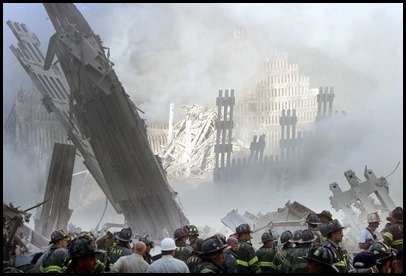
In the twenty years since the tragic day when America was attacked on September 11, 2001, we have witnessed great courage and bravery by our countless men and women who came to the aid and support of their brothers and sisters in the midst of crisis. First responders, many of whom ran towards danger never to return, exemplify the American spirit, and we honor them always. Flight crews facing unimaginable horror that day focused on caring for their passengers who turned to them for help in moments of fearful desperation. And the men and women of the military courageously stepped forward to defend our freedom. A shining tower of architectural beauty now calls us to the place where the World Trade Center towers once stood. The 9/11 Memorial honors the lives lost and helps us to heal from the trauma of that day while holding up America’s resolve to never forget. Memorials have also been erected at the Pentagon and in Shanksville, Pennsylvania where, in the midst of additional attacks, the extraordinary heroism of citizens and those who serve to protect us saved many lives.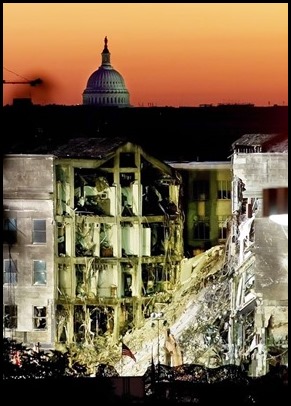
In the years since September 11, 2001, we have also experienced two deep and long-term economic downturns, a global pandemic that has led to more than 600,000 Americans losing their lives. And we have seen far too many people fall into poverty through no fault of their own, continuing an inequity that has for too long unfairly burdened those whose goal is to realize the dream of a better life for their families. A lack of civility and a too-quick readiness to denigrate and assign blame to others, amplified through social media, is fracturing communities and making us less trusting of our neighbors. Our brothers and sisters within the interfaith community have experienced an unprecedented amount of hate; we stand in solidarity with men and women of all faiths to combat this evil.
Almost 3,000 people lost their lives on 9/11. Many have since died from the health impacts directly attributed to the collapse of the towers. Two wars have cost thousands of American lives and also the lives of our allies and citizens in Afghanistan and Iraq. Many men and women who answered the call to defend us suffered life-altering injuries. We are now called to support them as they return to our communities.
September 11th changed all of us and our society. We owe the families of those lost on 9/11 the honor of finding ways to overcome our differences and building communities of compassion and love that unites us. We should be motivated to take meaningful action by looking past our differences and embracing a culture of mutual respect and dialogue. The Church has a role in this and endeavors to be a beacon of hope for the distressed, friend to the forgotten and helping hand to the less fortunate.
Many of us remember where we were and what we were feeling on that tragic day twenty years ago. I was in Washington, D.C., for meetings at the United States Conference of Catholic Bishops. Shortly after the attacks, we canceled our meeting and made our way to the nearby Shrine of the Immaculate Conception for Mass on the campus of Catholic University, where a crowd had already gathered to pray. With the help of the University’s president, who made his car available, I was able to return to New England with my fellow bishops to be with the people of the Diocese of Fall River where I was bishop.
All across the world, there was a strong sense of community and solidarity. Our need to share the profound sorrow of that time that brought people together in a profound way. The events of September 11th demonstrated the fragility of human life and also our resilience and recognition of our common bond of humanity
Remembering the events of September 11th twenty years later, we pray for the victims, the families and the survivors who may still be traumatized and whose health has been compromised by the effects of the attacks.
We pray for peace in our world. We pray for wisdom to overcome our differences. We pray for a future free of terrorism and hate. We pray for the healing that comes from communities of love for another, mutual respect and caring. And we commit to never forget those whose lives were lost that day.
As some of you may have heard in the news, this week, I have been visiting the Dominican Republic, Haiti and Cuba. Several months ago, I was invited to celebrate the Mass for the Feast of Nuestra Señora de Caridad del Cobre (Our Lady of Charity of Cobre), which is the national patronal feast of Cuba at the shrine in Santiago de Cuba on Sept. 8. However, following the terrible earthquake in Haiti, we added a stop to that country. Knowing how our local Haitian community has been so greatly affected by this tragedy, I thought it would be an important opportunity for me to make this trip.
Sunday, I traveled to Santo Domingo in the Dominican Republic with a group of doctors from the New York-based medical organization SOMOS who were bringing medical supplies to Haiti, as well as to Cuba. With us was the president of SOMOS, Dr. Ramón Tallaj, and my good friend, Mario Paredes, who is the CEO of SOMOS. 
When we arrived in Santo Domingo, we had Mass at the house of Archbishop Francisco Ozoria. Then, I visited retired Cardinal Nicolás de Jesús López Rodríguez, whom I have known for over 40 years. He came to my ordination when I was ordained bishop in the Virgin Islands in 1984 when he was serving as Archbishop of Santo Domingo and Primate of the Americas.
On Monday, we left very early in the morning for a cramped, 4-hour helicopter ride to Port-au-Prince and then on Les Cayes. There, we met with Cardinal Chibly Langlois, who was, of course, injured in the earthquake. His house collapsed, and three people living with them died. The cardinal’s knee was injured, and he required surgery in Port-au-Prince. Now, he is back in Les Cayes, and living in a house that the diocese has for retired priests. (The building is actually not yet finished, but at least it is standing.)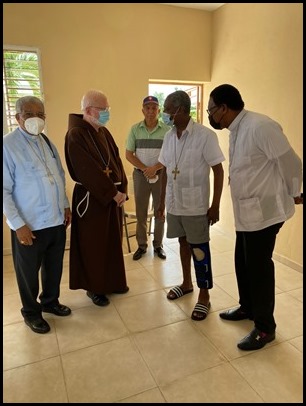
We also met with Bishop Pierre-André Dumas from the Diocese of Anse-à-Veau et Miragoâne. With him was Father Louis Mersone, a Haitian-American who was raised in Boston at St. Angela’s Parish and is a good friend of Father Bill Joy. He went to the Franciscan University of Steubenville and discerned that his vocation was to go back and be ordained a priest in Haiti. He is now the rector of the cathedral of Anse-à-Veau et Miragoâne.
We toured the area and visited a number of the churches that were destroyed by the earthquake.
This earthquake was even more powerful than the earthquake a decade ago in Port-au-Prince, but it hit in a much more rural area. So, while the number of deaths was far fewer, the destruction was just incredible. Bishop Dumas told us that he lost 30 chapels and several parish churches. Of course, those churches are one of the few institutions people in those communities have.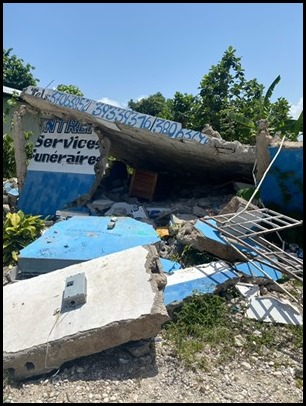
Going around, we heard from the people about the dire situation there — the lack of potable water, food and shelter. On top of this, there is always the threat of violence. 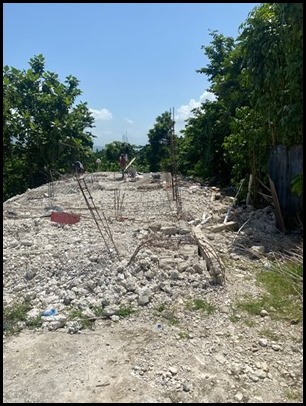
I’m unsure of what is going to happen going forward in Haiti. The new government is trying to establish itself; however, the challenges are simply gigantic. There are local governments that are working very closely with the Church, and I met the local prefect for the area of Les Cayes who came to see me with Cardinal Langlois.
Of course, Catholic Relief Services is also on the ground there and doing a lot of work to bring aid to Haiti. But we certainly need to be supportive of them. I’m hopeful that the collection that we are taking up in Boston and throughout the United States will raise the kind of funds that are needed to respond to the needs of the Church and the people of Haiti at this time.
Through all this, the Haitians, as always, remain a people of great dignity, strength, character and faith in God. That’s what gets them through these tragedies, which seem to come fast and furious at them as a people.
That night, I returned to Santo Domingo, where I had dinner with the President of the Dominican Republic, Luis Abinader, his wife, Raquel, and a number of officials. President Abinader is of Lebanese extraction, a very devout Catholic and very interested in the role of the Church in his country. In the Dominican Republic, the Church has a very close relationship with the government, and they collaborate on many projects, such as the construction of the new Shrine of Santo Cristo de Los Milagros.
Tuesday, we left for Santiago de Cuba, but before I left, I had Mass for the Capuchin community at the church of San Francisco de Paz y Bien, a place I have stayed often in the past. With us at the Mass was the Deacon Benito Moreno, the father of Father Benito Moreno, one of our newly ordained priests in the Archdiocese of Boston. After the Mass, I had breakfast with him and the friars.
Upon our arrival in Santiago de Cuba, we had to undergo a six-hour quarantine before going to the shrine of Our Lady of Charity of Cobre, where we were staying.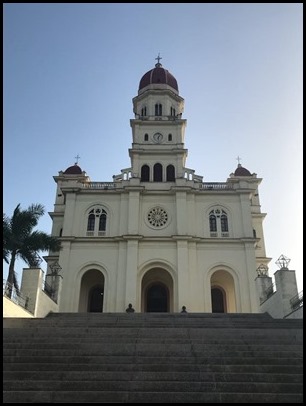
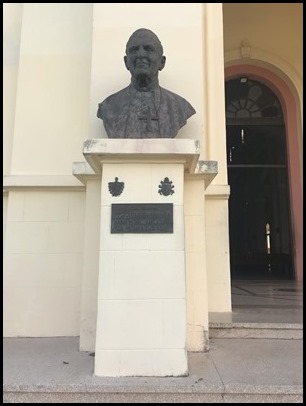
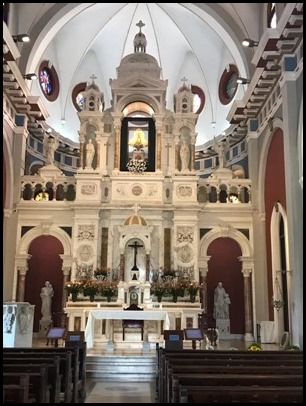
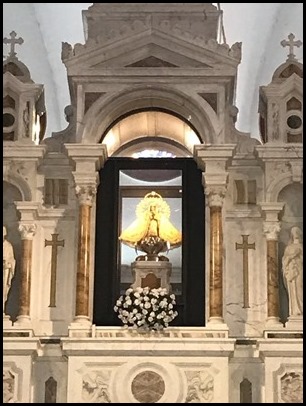
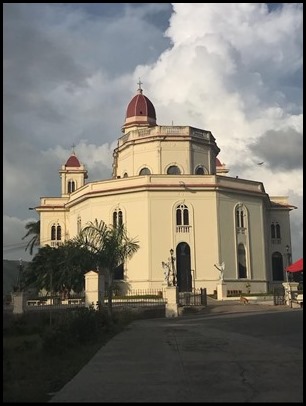
Wednesday was the Feast of Our Lady of Charity, the Patroness of Cuba, and I celebrated the 7 a.m. Mass at the shrine. I was accompanied by Archbishop of Santiago Dionisio Ibáñez and Bishop Emilio Aranguren of Holguín.
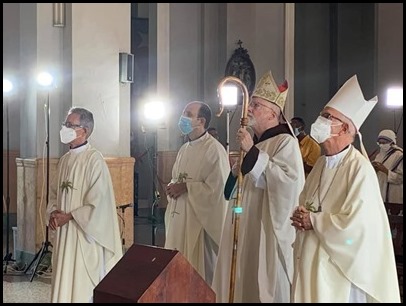 Because of the pandemic, there is a curfew in Santiago from 1:00 in the afternoon till 7:00 the next morning. So, there are only about six hours of the day that people can really circulate within the city. So, I was very edified that so many people were able to come to my Mass, which was filled.
Because of the pandemic, there is a curfew in Santiago from 1:00 in the afternoon till 7:00 the next morning. So, there are only about six hours of the day that people can really circulate within the city. So, I was very edified that so many people were able to come to my Mass, which was filled.
With the shrine choir
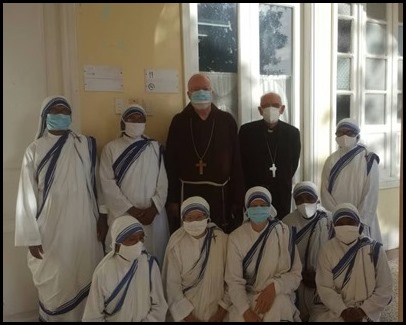 With Missionaries of Charity at the shrine
With Missionaries of Charity at the shrine
Later that morning, we went to visit the cathedral, which was also filled, and all the priests were telling me that their parishes had six, seven or eight Masses for the Feast of Our Lady of Charity, as well.
As I told the people in my homily, the first public Mass I celebrated was the Mass of Our Lady of Charity at St. Matthew’s Cathedral for the Cuban community of Washington D.C. So, I said, it was very meaningful for me to be able to celebrate that Mass 51 years later in the shrine itself.
Following the Mass, I attended a meeting between the SOMOS doctors and a group of local Catholic doctors. It was very interesting to hear the challenges they are facing and it was a very productive meeting.
Then, after lunch, we traveled to Havana, where I stayed at the nunciature, the place I had stayed many years ago when I was visitator to the seminaries in Cuba. There, I saw a number of priests who were seminarians in those days and other people I have come to know over the years in Cuba.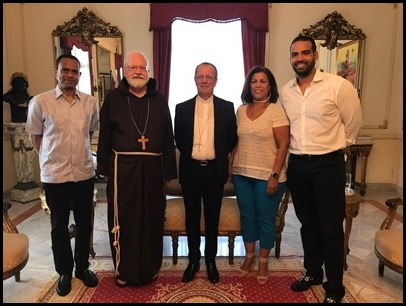
That evening, the doctors who were accompanying me from SOMOS and I had dinner with Foreign Minister Bruno Rodríguez and some of his staff.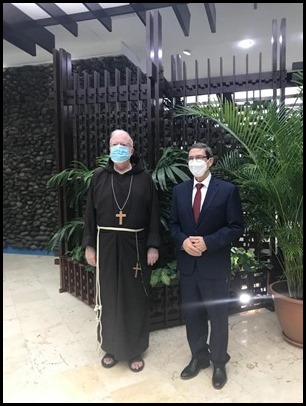
Thursday morning, I had Mass at the tomb of my friend Cardinal Jaime Ortega who died in 2019. His body has now been re-interred at the Cathedral of Havana. Several bishops and priests joined me there for that Mass.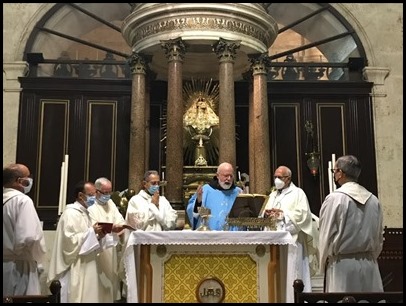
Later that day, we made a visit to a medical facility where the Cubans are producing vaccines to fight the coronavirus pandemic. They are working in conjunction with MIT and several hospitals in the United States and have been able to develop several vaccines that they are distributing to other countries, as well as to the Cuban people. It was impressive to see what the Cubans have done.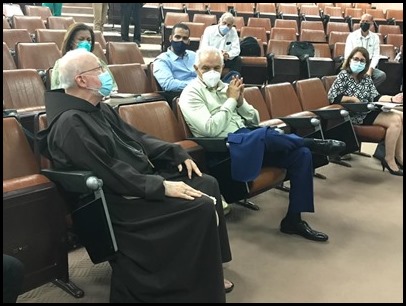
One of the things the Cubans have done since the revolution is to train large numbers of doctors and send them all over the world. For example, the Foreign Minister told me they have about 250 doctors working in Haiti alone. Of course, the program has come under attack by many, but certainly, the whole area of medical care and public health is a very important part of the ethos of the Cuban Revolution.
So, I spoke about healthcare being a very important part of the Church’s work of evangelization, following the example of Christ in his concern and love for the sick and the suffering. I also noted that the Catholic Church brought hospitals to Europe and that today, about 25 percent of the hospitals in the world, and over 60 percent of the hospitals in developing nations, are institutions of the Catholic Church.
Following that visit, I had a meeting with Cuban President Miguel Díaz-Canel and his staff. We spoke about the desire of the Catholic agencies to be able to support the work of Caritas Cubana, which is their Catholic Charities on the island. The Church does a great deal of work with the elderly, which is a very large population in Cuba, as well as work to address the scarcity of food and medicines. So, we were appealing to the president to make it more possible for Catholic Relief Services and Caritas Internationalis to be able to send aid to Cuba through the Catholic Charities organizations of the dioceses of Cuba. We also wanted to encourage them to have more direct contact with the bishops of Cuba.
In addition, I spoke to him also about the demonstrations that took place this summer and appealed for clemency for those involved in the demonstrations in a nonviolent way.
The government of Cuba is, of course, very concerned that the remittances Cuban-Americans were sending to their relatives are now much more difficult to receive and that the travel possibilities to Cuba have also been greatly restricted.
It was a very cordial meeting, and I gave the president the gift of a copy of the Holy Father’s latest encyclical, “Fratelli tutti.”
Thursday, I returned to Santo Domingo, where today I preached at the dedication of the shrine that the government has built in honor of Santo Cristo de Los Milagros, which I mentioned earlier. But I’ll share the details of that with you next week.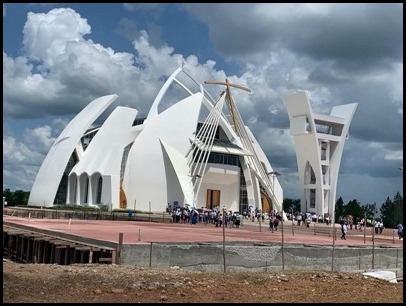
So, as you can see, it has been a very busy week, but it was a wonderful trip. It has been very moving to be close to these people in Santo Domingo, Haiti and Cuba. I have been associated with these countries for over 50 years, and it was wonderful to be able to see, meet, and pray with so many people.
Until next week,
Cardinal Seán

